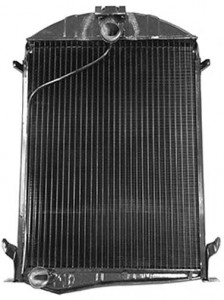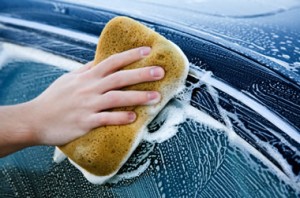April 27, 2011 By (Edit)
It’s quite difficult to digest all the blinking lights seen when you’re seated on the driver’s seat. A first time driver or an “always passenger” will not easily understand those gauges and indicators unless a long-time driver explains what each of them is for. I remember my first driving lesson. My driving instructor talked so fast that I couldn’t even remember what gauge is which, what a blinking image means, and what all those numbers are for.
This article gives information about the control and displays found in the instrument control panel that contribute to the daily operation of your car. All the essential controls are within easy reach (Common controls found on contemporary cars; featured images may vary depending on car model).
Wednesday, April 27, 2011
Understanding the Signs in Your Car | Automotive Parts Suppliers
Cool Car Myths | Automotive Parts Suppliers
April 27, 2011 By (Edit)
Here at Automotive Part Suppliers, we value cars and the drivers that own them. That is why we provide facts, tips, and suggestions for the betterment of your automobile. This involves maintenance and management, cleanliness and durability. But today, will be different. Today we shall take a look at a couple of car myths. Today we shall celebrate myths that will require certain cars to be smashed, distorted, destroyed, and blown into little pieces of steel crumbs.
Drivers, please welcome the Mythbusters, who have professionally conducted these highly-financed and apparently legal experiments. Along with our Mythbusters, Adam and Jamie, are a big rock, two trucks, a rocket, and some very unfortunate cars.
You know we’re in for something cool when the following myth is based from a movie called “Hellboy.” Remember that scene when good ‘ol Hellboy was on the street and was about to get hit by a car? Normal people would run away to avoid an accident, but since Hellboy is a demon-turned-crime-fighter still fresh from the gates of hell, he punches the hood of the car, making the car somersault in the air.
Tuesday, April 19, 2011
10 Important Facts about Flat Fin Radiators
When it comes to cooling down your engine, the radiator is of great importance. This is especially true during these hot summer months. Here are some of the interesting tidbits I’ve discovered about flat fin radiators:
- Flat fin radiator cores have 3 types of materials – Brass, Copper, and Steel fin. These can also come in a non-louvered or louvered fin construction by which these are specifically designed in ensuring a maximum airflow. These types can also be structured with both high-flow and low-flow tubing.
- Having been produced in copper or brass, flat fin radiators are well-resistant to salty and acid conditions.
- Different types of flat fin radiators come in different sizes - the Copper is usually 2 row up to 8 tube rows with a core thickness of 37 to 150 mm and its fin pitch is also 2.2 mm, 2.5 mm, and 3 mm. As for the Steel, it is normally 3 row up to 8 rows with a core thickness of 57 to 150 mm and its fin pitch are also 2.2 mm, 2.5 mm, and 3mm (just the same as the Copper’s).
- The core of a flat fin radiator looks like the picture below:
Sunday, April 17, 2011
3 Tips to Lower Car Maintenance Cost in the Summer
Summer is here and it’s that time of the year when the weather is scorching hot. As you probably know, your car can’t take too much of the heat - your engine is already making your car hot enough and the outside temperature only adds more heat to it. Without proper maintenance, your car will easily give in to the summer heat and will be prone to breaking down. In some cases, this may be an unavoidable circumstance. However, here are some tips to help you minimize your car maintenance costs.
Detecting Problems with Your Flat Fin Radiator
If you drive a lot, one of the problems you’re likely to encounter is an overheated engine. Just like how the human body needs sweat to cool down, the automobile engine also needs a cooling mechanism – more so when the engine is operating in a hot environment. This is where radiators come in. The flat fin radiator is a type of radiator where “pins” are spread across the engine to cool it down. Since these radiators fight off heat every day, they are easily subjected to wear and tear. Here are some tips for you to detect if your radiator is already having problems:
Thursday, April 14, 2011
Cleaning The Exterior of Your Car the Right Way
We all have a personal preference when taking a bath. We usually begin by getting wet, then applying shampoo, then soap, and then we’re done. Others go about their bath process in a different order but the one mentioned above seems to be the most sensible. In the same way, people have their own preference when cleaning the exterior of their car. And just like with taking a bath, there is a general unspoken principle when it comes to cleaning cars — an order designed such that your car will get clean in the least amount of time and with the least amount of effort.



